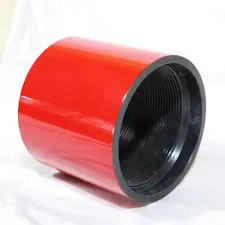- Afrikaans
- Albanian
- Amharic
- Arabic
- Armenian
- Azerbaijani
- Basque
- Belarusian
- Bengali
- Bosnian
- Bulgarian
- Catalan
- Cebuano
- Corsican
- Croatian
- Czech
- Danish
- Dutch
- English
- Esperanto
- Estonian
- Finnish
- French
- Frisian
- Galician
- Georgian
- German
- Greek
- Gujarati
- Haitian Creole
- hausa
- hawaiian
- Hebrew
- Hindi
- Miao
- Hungarian
- Icelandic
- igbo
- Indonesian
- irish
- Italian
- Japanese
- Javanese
- Kannada
- kazakh
- Khmer
- Rwandese
- Korean
- Kurdish
- Kyrgyz
- Lao
- Latin
- Latvian
- Lithuanian
- Luxembourgish
- Macedonian
- Malgashi
- Malay
- Malayalam
- Maltese
- Maori
- Marathi
- Mongolian
- Myanmar
- Nepali
- Norwegian
- Norwegian
- Occitan
- Pashto
- Persian
- Polish
- Portuguese
- Punjabi
- Romanian
- Russian
- Samoan
- Scottish Gaelic
- Serbian
- Sesotho
- Shona
- Sindhi
- Sinhala
- Slovak
- Slovenian
- Somali
- Spanish
- Sundanese
- Swahili
- Swedish
- Tagalog
- Tajik
- Tamil
- Tatar
- Telugu
- Thai
- Turkish
- Turkmen
- Ukrainian
- Urdu
- Uighur
- Uzbek
- Vietnamese
- Welsh
- Bantu
- Yiddish
- Yoruba
- Zulu
Exploring Effective Coupling Solutions for Enhanced Tubing Performance and Reliability in Various Applications
Understanding Coupling for Tubing Essential Insights
In the realm of oil and gas production, the integrity and efficiency of tubing systems are crucial for successful extraction and transportation of resources. One of the key components that ensures this integrity is the coupling. Couplings for tubing serve as critical connectors that join various lengths of tubing to create a continuous flow path for hydrocarbons. This article explores the importance, types, and considerations relating to couplings in tubing systems.
What is Tubing Coupling?
A tubing coupling is a mechanical element used to connect two sections of tubing. Typically threaded at both ends, these couplings create a secure joint that can withstand the high pressures and temperatures encountered in well operations. The primary function of a coupling is to allow for the easy assembly and disassembly of tubing, facilitating maintenance, repairs, and replacements when necessary.
Types of Tubing Couplings
There are several types of couplings used in tubing systems, each designed for specific applications and environments
1. Threaded Couplings These are the most commonly used couplings, featuring standardised threads that allow for easy connection and disconnection. They are ideal for environments where tubing may need to be frequently altered or replaced.
2. Welded Couplings In situations where a more permanent connection is necessary, welded couplings are employed. This type involves welding the ends of the tubing together, providing a robust joint that can handle extreme pressures but lacks the flexibility of threaded couplings.
3. Flanged Couplings These couplings involve a flange on each end of the tubing, which are bolted together. This method is often used in large-diameter tubing systems and areas where frequent maintenance is unlikely.
coupling for tubing

4. Slip-on Couplings Commonly found in less demanding environments, slip-on couplings allow one piece of tubing to slide over another, secured with a clamp or other fastening device. They are easier to install but may not provide the same level of pressure resistance as threaded or welded couplings.
Considerations for Coupling Selection
Selecting the appropriate coupling for tubing is critical to ensuring operational efficiency and safety. Several factors need to be considered
- Pressure and Temperature Ratings The selected coupling must be suitable for the operating conditions, including the maximum pressure and temperature it will be exposed to during operations.
- Material Compatibility Couplings are typically made from various materials, including steel, stainless steel, and alloys, which must be compatible with the fluids being transported to prevent corrosion or failure.
- Application Requirements Consider the specific requirements of the application, such as whether frequent disassembly is likely needed, or if the environment presents challenges such as extreme temperatures or corrosive substances.
- Regulatory Standards Compliance with industry regulations and standards must be ensured to maintain safety and reliability in the system.
Conclusion
Couplings for tubing play an indispensable role in the oil and gas industry, ensuring the effective and safe transportation of hydrocarbons. By understanding the types of couplings and the critical considerations for their selection, operators can enhance the reliability of their tubing systems. As the industry evolves, ongoing improvements in material science and engineering will continue to advance coupling technology, ultimately contributing to more efficient and sustainable extraction processes.
-
Well Casing Extension Couplings – Applications and InstallationNewsJun.06,2025
-
Types of Crossover Subs in Drilling & CompletionNewsJun.06,2025
-
Key Features of High-Quality Tubing Pup JointsNewsJun.06,2025
-
Installation and Maintenance Tips for Steel Couplings for PipeNewsJun.06,2025
-
How to Select the Right Pup Joint for Oil & Gas OperationsNewsJun.06,2025
-
Applications of Stainless Steel Pipe CouplingsNewsJun.06,2025







